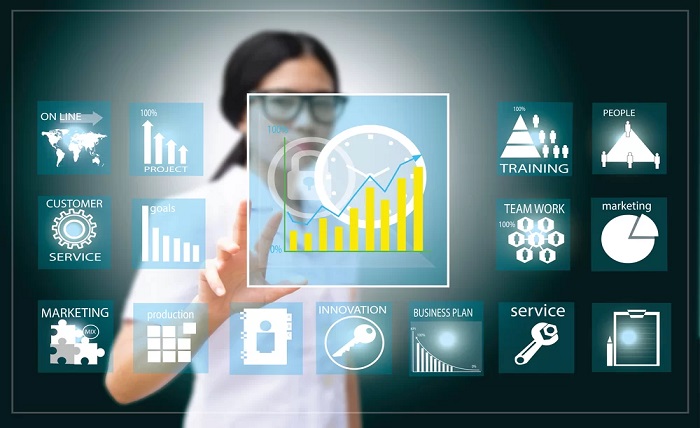
Data analytics is the process of examining and interpreting large sets of data in order to discover meaningful insights and trends. It involves a variety of techniques and tools, including data mining, statistical analysis, and machine learning, and is used in a wide range of industries and applications.
Data analytics can be used to improve business operations, identify new opportunities, and make more informed decisions. For example, a retail company might use data analytics to analyze customer purchasing patterns in order to optimize its inventory, or a healthcare organization might use it to improve patient outcomes.
Types of Data Analytics
There are several types of data analytics, each with its own unique set of tools and techniques. Some of the most common types include:
- Descriptive Analytics: This type of analytics is used to describe and summarize data, and is often used to identify patterns and trends.
- Diagnostic Analytics: This type of analytics is used to investigate and understand the reasons behind specific patterns or trends.
- Predictive Analytics: This type of analytics is used to make predictions about future events or outcomes, based on historical data.
- Prescriptive Analytics: This type of analytics is used to recommend specific actions or decisions, based on data and predictions.
Applications of Data Analytics
Data analytics can be used in a wide range of industries and applications, including:
- Business: Data analytics can be used to improve operations, identify new opportunities, and make more informed decisions in industries such as finance, retail, and healthcare.
- Social Media: Data analytics can be used to understand the behavior and preferences of social media users, and to improve the effectiveness of social media marketing campaigns.
- Cybersecurity: Data analytics can be used to identify and prevent cyber attacks by analyzing large sets of data from networks and systems.
- Manufacturing: Data analytics can be used to optimize production processes and improve quality control in manufacturing industries.
- Sports: Data analytics can be used to improve player performance, team strategies, and fan engagement in sports.
Data Analytics Tools
There are a variety of tools and technologies that can be used for data analytics, including:
- Statistical Analysis Software: Programs like R and SAS are commonly used for statistical analysis, and can be used to perform tasks such as data visualization, hypothesis testing, and predictive modeling.
- Data Mining Software: Tools like RapidMiner and KNIME are used for data mining, and can be used to extract patterns and insights from large sets of data.
- Business Intelligence (BI) Software: Programs like Tableau and QlikView are used to create interactive visualizations and dashboards, and can be used to explore and analyze data in a business context.
- Big Data Platforms: Technologies like Hadoop and Spark are used to process and analyze large sets of data, and can be used to perform tasks such as data warehousing, data integration, and real-time analytics.
- Cloud Services: Cloud-based data analytics services like Amazon Web Services and Microsoft Azure can be used to store and process large sets of data, and can be accessed remotely from anywhere.
Challenges of Data Analytics
While data analytics can provide valuable insights and improve decision-making, there are also several challenges that organizations must be aware of:
- Data Quality: The accuracy and completeness of data can be a major challenge, as inaccurate data can lead to incorrect conclusions and decisions.
- Data Security: Protecting sensitive data and ensuring compliance with regulations can be a complex task, especially when working with large sets of data.
- Data Privacy: Ensuring the privacy of individuals and their personal data is a major concern in data analytics, and organizations must be aware of privacy laws and regulations.
- Data Governance: Ensuring data is accurate, consistent and accessible to the appropriate people is a major challenge, especially in large organizations.
- Data Visualization: Creating effective and meaningful visualizations of data can be a challenge, and organizations must be aware of the principles of data visualization in order to make the most of their data.
Data analytics is a powerful tool that can be used to discover meaningful insights and trends in large sets of data. It involves a variety of techniques and tools, including data mining, statistical analysis, and machine learning, and can be used in a wide range of industries and applications. However, organizations must also be aware of the challenges that data analytics can present, such as data quality, security, privacy, and governance. By understanding the different types and applications of data analytics, and by using the right tools and technologies, organizations can make the most of this powerful tool and gain a competitive advantage in their respective fields.



